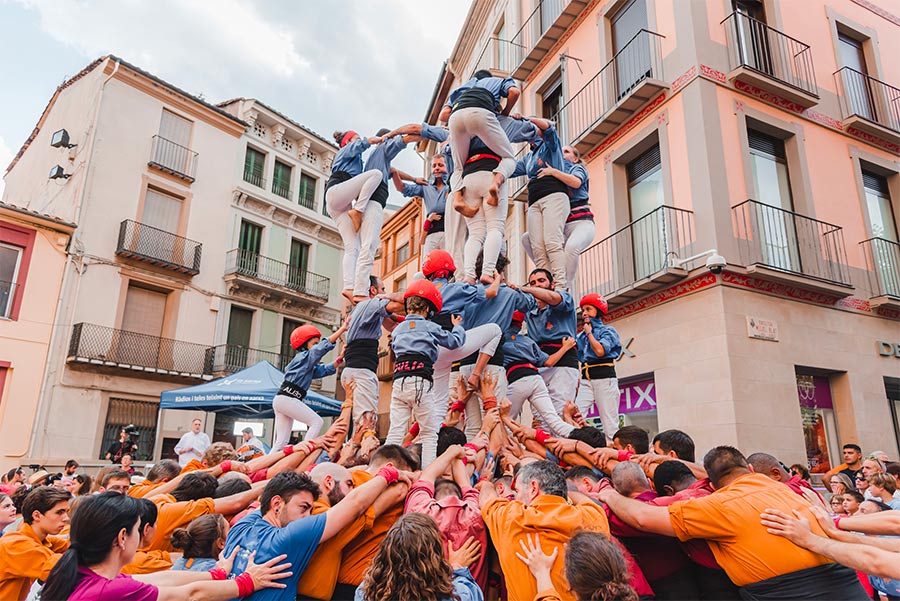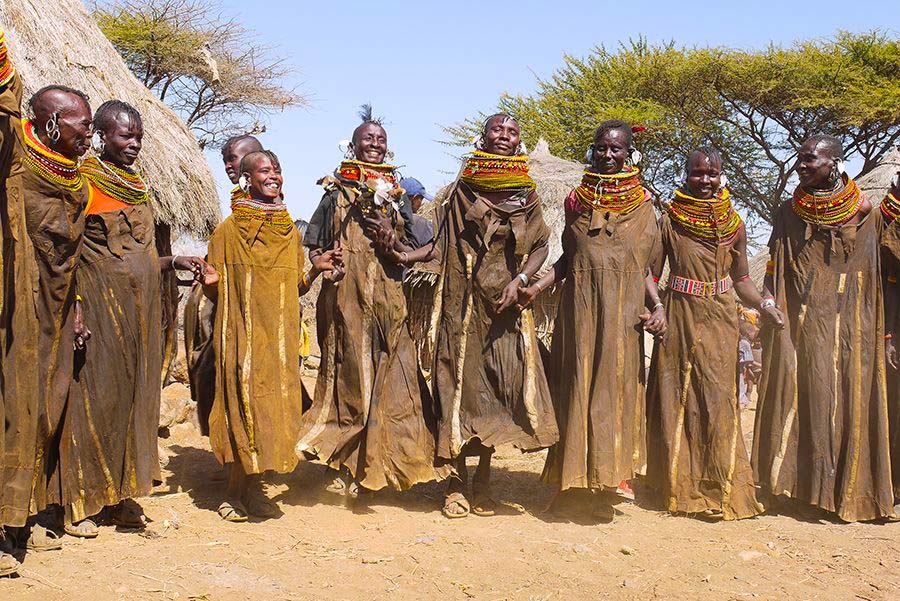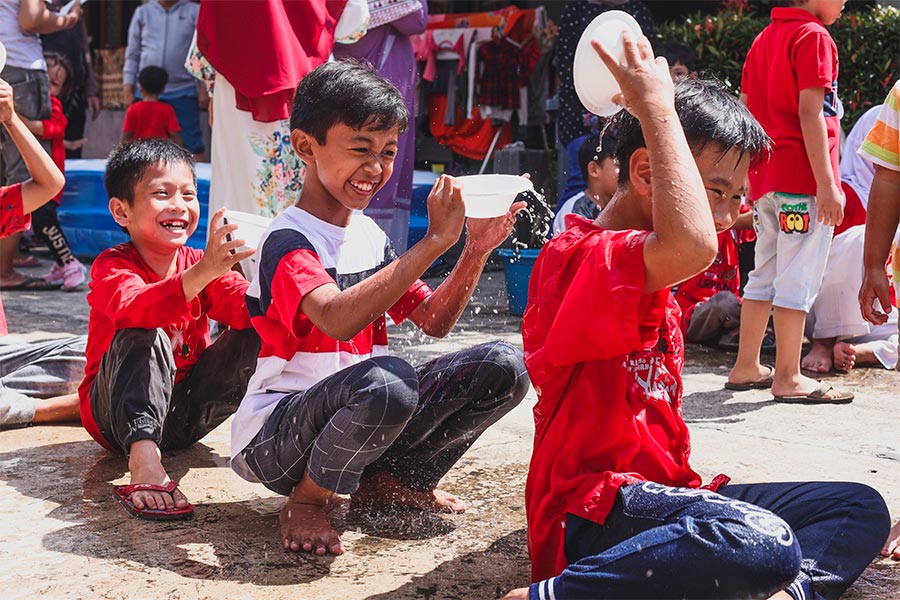- Cooperation makes humans an ultrasocial species, and its emergence is a major transition in evolution
- Humans cooperate in groups comprised of hundreds, thousands, and even millions of genetically unrelated individuals
- Direct reciprocity works to sustain cooperation in humans and culture might have given reciprocity a boost in humans
Highlights
Humans are much more cooperative than any other vertebrate species. Division of labor and delayed exchange of valuable commodities occurs in virtually every human society; they are virtually absent in other animals. In human societies, the sick and injured are fed and cared for; in other animals, they are on their own. Public capital facilities like communal shelters, ceremonial grounds, and defenses are commonplace in human societies; they are unseen in almost every other animal. Humans regularly help strangers—donate blood, give directions, offer their seat, engage in philanthropy—more than most other animals help individuals they have known their entire life. This high degree of cooperation makes humans an ultrasocial species, and its emergence is a major transition in evolution.
Reliance on culture may be key
Human ultra-sociality—or the ability to cooperate with huge numbers (millions and more) of genetically unrelated individuals— is a particularly intriguing and novel evolutionary puzzle because it is not explained by genetic relatedness. Most ultra-sociality in nature occurs among genetically related individuals (mothers, grandmothers, sisters, brothers, fathers, grandfathers, related aunts and uncles). In eusocial insects (an advanced level of social organization, in which a single female or caste produces the offspring and nonreproductive individuals cooperate in caring for the young)—the highest level of organization of sociality—workers tend to be related siblings. In the eusocial mammal—naked mole rats—individuals seldom migrate from their natal burrow creating underground colonies of highly related individuals.
But humans cooperate in groups comprised of hundreds, thousands, and even millions of genetically unrelated individuals. A growing body of research suggests that our extreme reliance on culture—socially transmitted knowledge, beliefs, and norms—might be the key ingredient that fueled this transition. Language too may be critical because it allows cooperative reputations to spread and become widely known, and noncooperators are also known by all.

Incredible cooperation is brought to bear by the human towers, called Castells, that are built by members of amateur groups, usually as part of annual festivities in Spanish Catalonian towns and cities. Image credit Shutterstock
Researchers have made key contributions to piecing together this puzzle through a combination of theoretical modeling, laboratory experiments, and field studies in small-scale subsistence societies. Jointly, this research sheds light on the scope and limits of various mechanisms of cooperation—kin selection, direct reciprocity or the practice of exchanging things with others for mutual benefit, indirect reciprocity, moralistic punishment and norm enforcement, and group-structured cultural evolutionary processes.
Research on contemporary small-scale foragers has been crucial to our understanding of the depth and breadth of cooperation among hunter-gatherer and small-scale horticultural societies. These studies suggest that there is extensive food sharing beyond the household. While kinship plays an important role in shaping patterns of giving, there is tangible cooperation even among unrelated individuals and among individuals living in different bands. This work has also illustrated how human life-history itself would be impossible without intensive cooperation.

Women who are no longer in their childbearing years and adult males produce more food than they consume. Reproductive women and children produce less than they consume. Communal food gathering and transfers are how human communities to allow reproductive-aged women to support multiple dependent offspring at a time and allow children to stay dependent for longer periods without having to engage in daily food seeking. Image credit Kim Hill
Compared to the typical primate, humans invest in a higher quality care in offspring. But surprisingly, humans have higher fertility and shorter interbirth intervals than chimpanzees even though chimpanzee juveniles need no care. Food transfers are how we escape from this trade-off. Post-reproductive women and adult males produce more food than they consume. Reproductive women and children produce less than they consume. Food transfers from these net-producers to these net-consumers allows reproductive-aged women to support multiple dependent offspring at a time and allow children to stay dependent for longer periods. During this prolonged childhood, humans can invest in the growth of a large brain and acquire the complex cultural skills and knowledge they need for hunting the largest, hardest to acquire foods in their habitat as adults.
Cooperation among “leaderless” societies
Politically uncentralized societies can organize cooperation at an impressively large scale. Among the Turkana, in Kenya, an acephalous—meaning lacking a head person—tribal-scale pastoral society in eastern Africa, men mobilize for large-scale raids in which they engage in conflict with neighboring ethnic groups. They mobilize these war parties to seize cattle, take revenge, and expel other groups from areas that are important Turkana watering and grazing sites. Such raids are a high-stakes form of cooperation—1% of participants get killed in these raids, and 20% of all males born in the study population die in warfare. Although individuals take great risks in combat to overcome the opponent’s resistance, all combatants can acquire the loot. Some gains like territory and deterrence are obtained even by noncombatants. Yet, the scale of Turkana raids is large. An average raiding party comprised of 315 warriors, who came from five different age groups, four different settlements, and three different subterritories of Turkana society. These men do not all know each other and have very few close kin with them.

The Turkana tribe is the second largest pastoral community in Kenya.Turkana people keeps herds of cattle, goats and camel. Livestock is a very important part of the Turkana people. Their animals are the main source of income and food. Image credit Rita Willeart flickr.com
Theoretical work in the area of cooperation illustrates how indirect reciprocity and peer punishment can help sustain large-scale cooperation in humans, and work among the Turkana has examined the role of these mechanisms. Attitudes towards Turkana warriors who shirk on the battlefield are consistent with indirect reciprocity’s role in sustaining cooperation. For example, participants are more likely to say that they would not help the coward if he needed to borrow an animal from them at a time of need. Being denied such help is consequential, as herdsmen lose their stock in raids, epidemics, and droughts and without aid from their relatives and community they cannot rebuild their herds.
Moralistic punishment by peers also plays a role in motivating cooperation. Age-mates reprimand and beat individuals who are accused of violating norms during raids and urge him to not repeat the offense in future raids. Such punishment is seen as an intervention to correct men who have erred, rather than as an opportunity to injure a person or dispense violence. Moreover, there are norms regulating by whom, how much, and in what manner individuals should be punished to ensure that such sanctions are legitimate. Age-mates and other community members discuss the matter beforehand during which differing opinions may be heard about whether punishment is warranted. Some violators are only criticized verbally and warned that if they repeat it, they will face more serious sanctions.
Reciprocity
Researchers are also tackling questions on how direct reciprocity works to sustain cooperation in humans and how culture might have given reciprocity a boost in humans. Reciprocity is sensitive to behavioral errors because a mistaken defection by one individual will motivate her partner to defect leading to endless mutual recrimination.
Two kinds of errors in understanding between individuals have been recognized. The first is when the individual knows she has erred, which is relatively easy to resolve. The actor who has erred can accept “punishment” without retaliating, and this act of contrition reestablishes cooperation. The second is when the actor does not realize that she has erred, because the partners hold different beliefs about what transpired. Such misunderstandings, labeled “perception errors,” remain a major challenge for the evolution of reciprocity. Opinions from third parties—like judges in modern societies—about what transpired help to align actors’ beliefs and help prevent continuing recriminations. This realignment of understanding sheds light on why reciprocity plays a crucial role in human societies but is much less important in the societies of other species.

Children learn to cooperate through activities, like games. Image credit Shutterstock
A longstanding puzzle of human sociality is that we cooperate with genetically unrelated individuals in transient interactions. Heavy reliance on culturally transmitted information enables such cooperation. Unlike genetic variation, cultural variation between groups can persist even as people move between groups because migrants can adopt cultural practices of their new group. Such “cultural” group selection can lead to norms for limited cooperation with cultural group members.
Experimental and theoretical work continues
For a long time, evolutionary theory did not explain human behavior as well as it explained the behavior of other animals. But recent models of cooperation have begun to integrate distinctive features of humans such as culture and moral sentiments into the evolutionary framework.
Direct reciprocity, and the range of reciprocal strategies that deal with errors and misunderstandings, have provided a useful framework for understanding pairwise relations in humans. Indirect reciprocity and punishment models have illuminated how humans evolved to cooperate in large groups of unrelated individuals. Finally, cultural group selection—a social learning mechanism that, combined with rewards and punishment, can stabilize a group behavior—explains the scale of human cooperation and why it is variable. There remain many unresolved questions. Researchers are actively engaged in theoretical work and empirical studies across a wide range of societies to help fill these gaps and provide us a more detailed picture of how we became ultrasocial.
Written by Sarah Mathew PhD